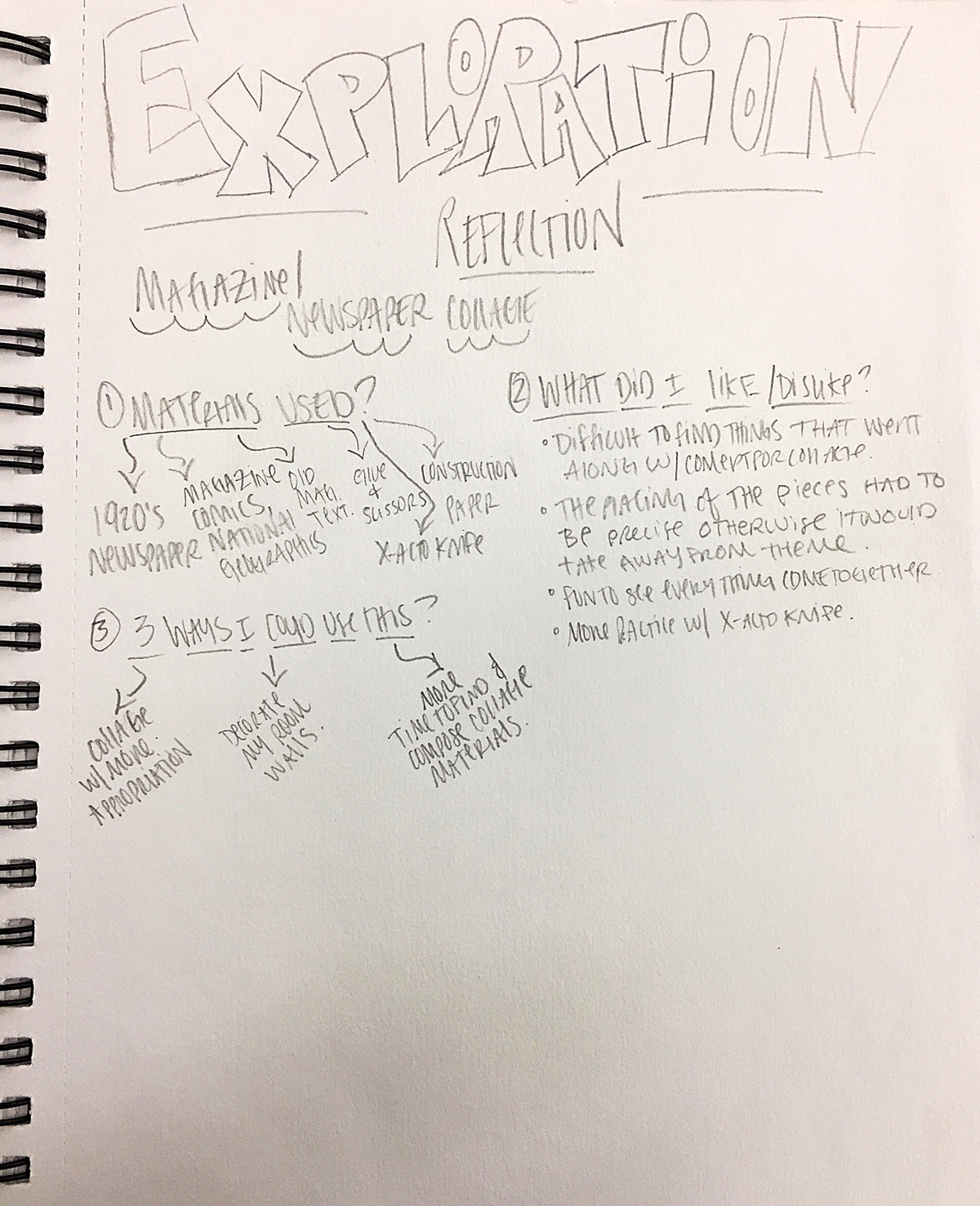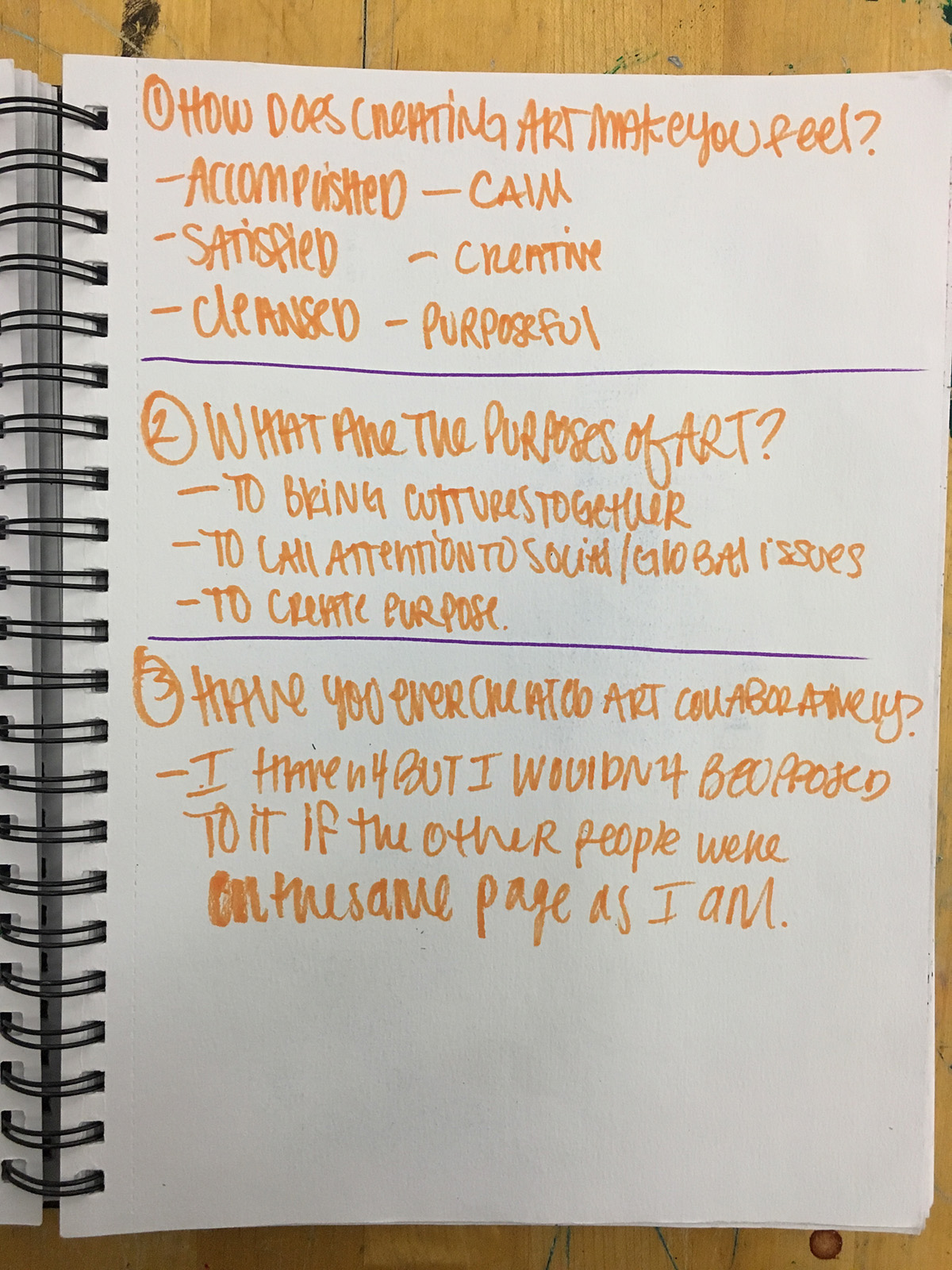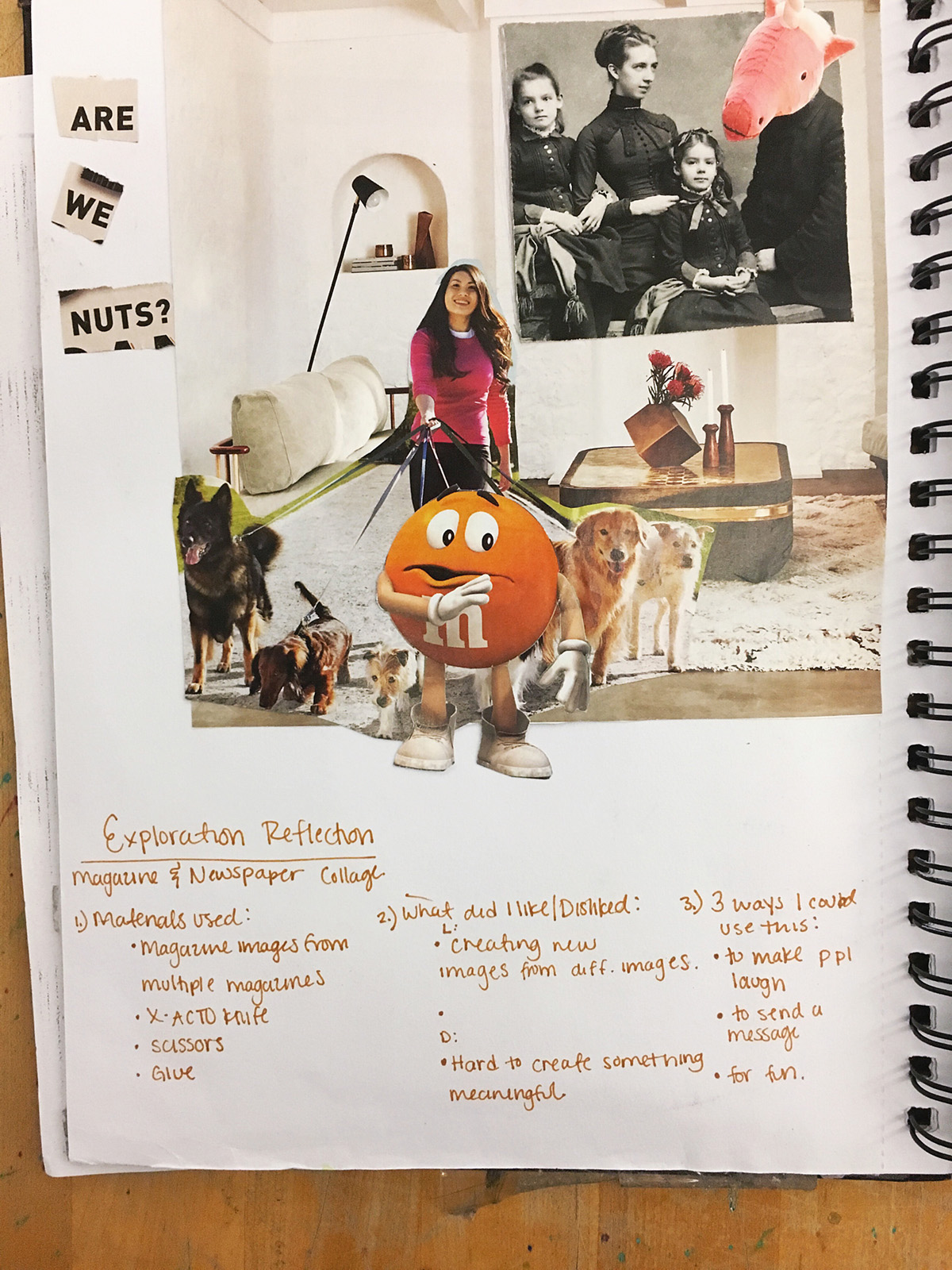Sharing Visual Stories + Experiences
By Lisa Pennell
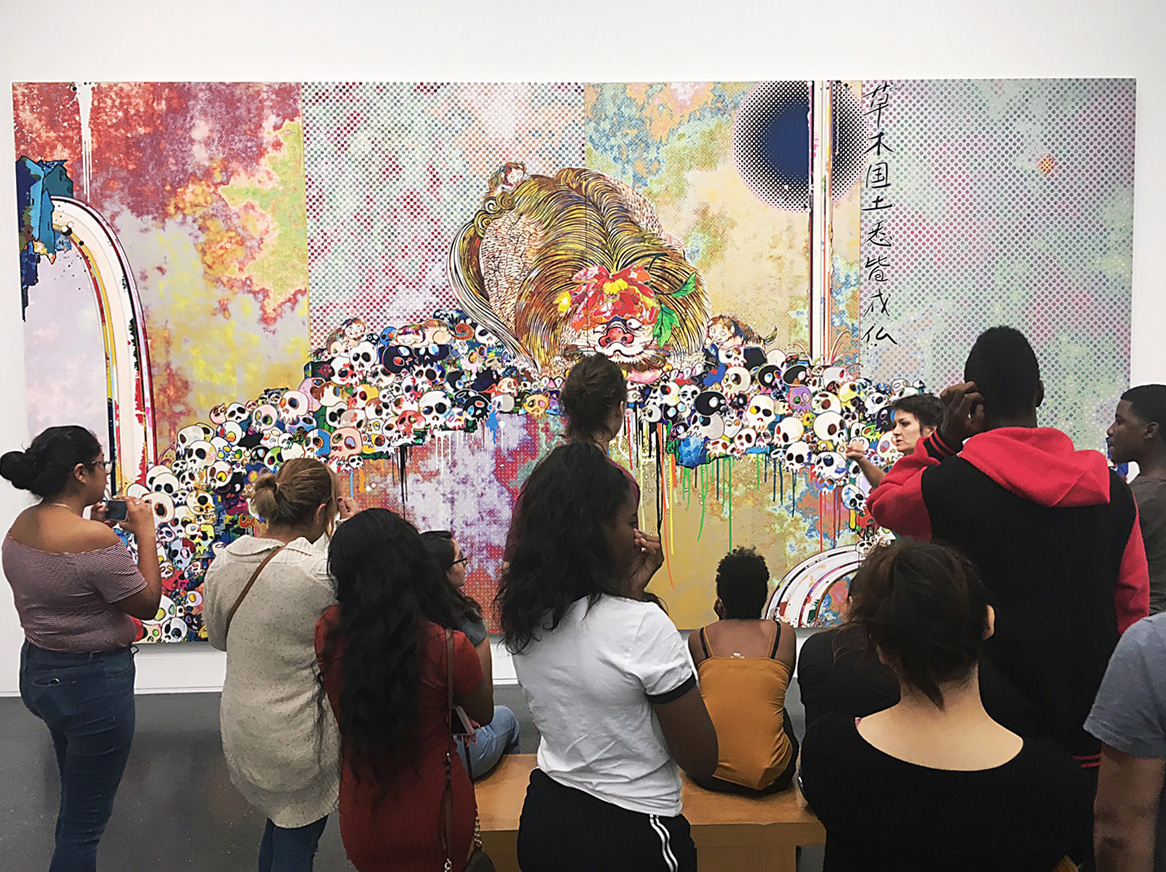
High school students in a second-level art class began the year exploring new media and techniques through testing, trying, and playing to develop new skills. These skills were applied in creating handmade books and telling personal stories with mixed media. While building their studio practice, students responded to reflective questions on the benefits of creating, asking “How does making art make me feel?” and “Why do we make art?” Students’ conclusions centered on creating for personal expression, stress relief, and just for fun. Students wanted to bring these benefits to their school community, engaging others through creating and sharing artwork. The project culminated in students holding art-making pop-up workshops outside the cafeteria, where they taught art-making processes to other school participants while having conversations about art.
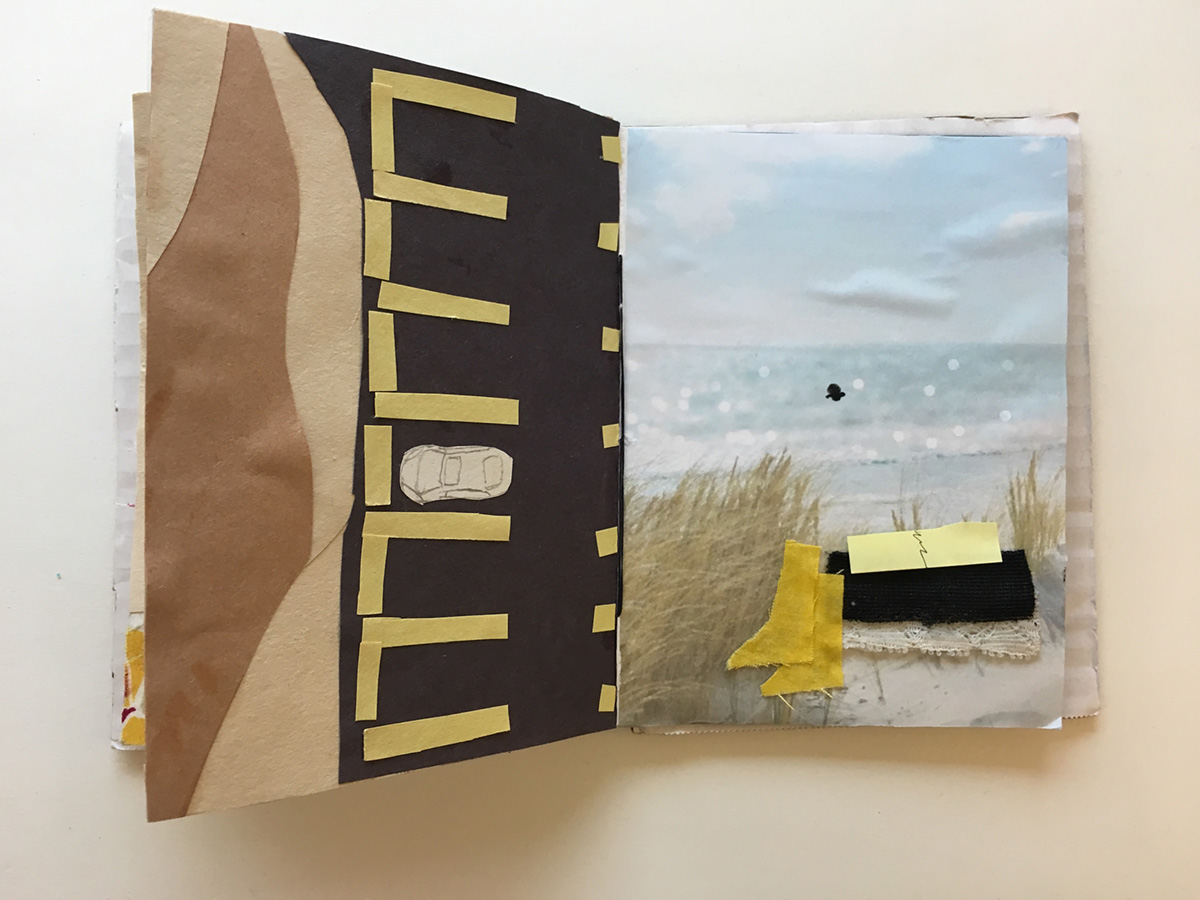
Goals
- Student artists will explore a range of media and techniques in collage without a preconceived plan.
- Student artists will envision and create a self-directed project that incorporates collage techniques with bookmaking and additional materials of their choice.
- Student artists will collaborate with peers to develop a shared art experience within their school community.
Guiding Questions
- What conditions, attitudes, and behaviors support creativity and innovative thinking?
- What factors prevent or encourage people in taking creative risks?
- How does collaboration expand the creative process?
- What is the value of engaging in the process of art?
- How can we involve the school community in a shared artmaking experience?
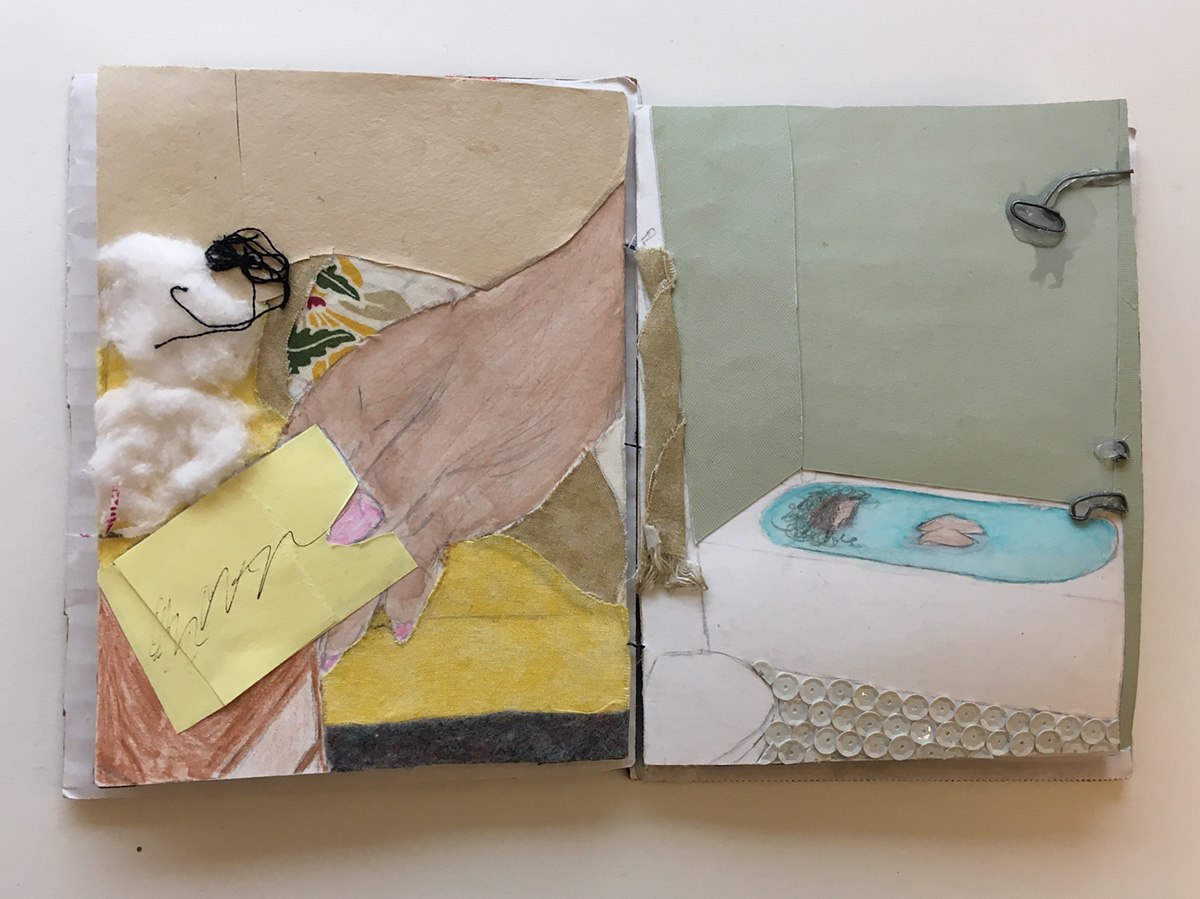
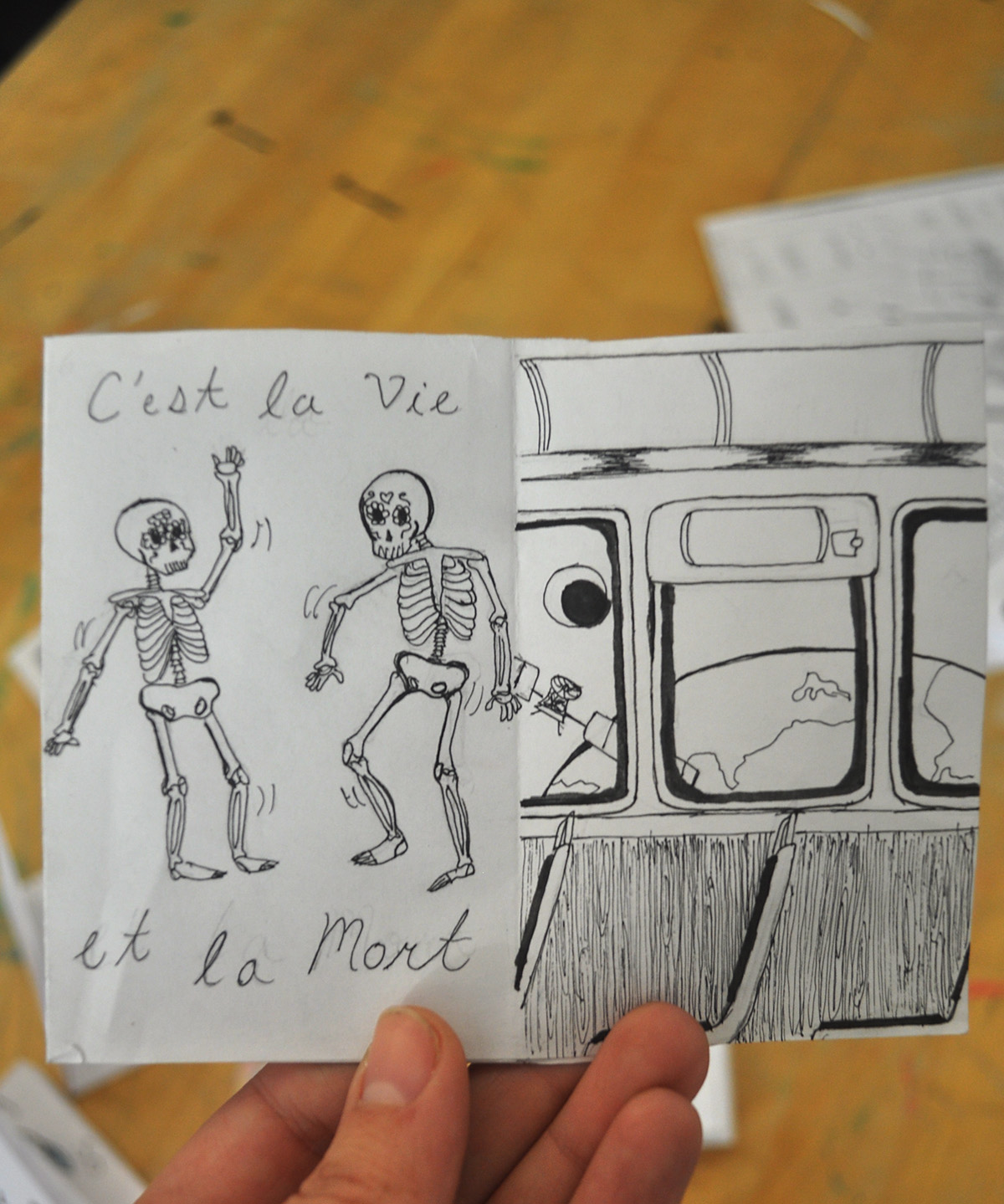
Documentation + Assessment Strategies
Students keep sketchbooks for the course that serve as a way to keep track of their progress, gather resources, and create artwork in informal ways. They use these sketchbooks to create their media explorations in collage, plan for individual projects, and develop the socially-engaged part of the unit.
Students documented their completed books through photos. Additionally, students took photos and videos of their interactions with the community when they gave specific individuals personalized zines and taught the school community different art processes.
With each media exploration, students were asked to reflect on the successes and struggles with the new media techniques. Students were also assessed on their intentional and explorative uses of these techniques. In assessing the socially-engaged part of our unit, the students and I developed and ranked five steps students needed to take. Just the simple act of participation in a shared art experience proved to be the most important aspect.
Learning Activities
Timeframe
The project took place at the start of the school year, over 4 weeks of daily 50 minute class periods.
SETTING THE STAGE
Students, from sophomores to seniors, explored media, reflecting on and sharing their work and ideas. Through these reflections we discovered the benefits of making art and developing a studio practice. Students sought and found support, stress-relief, fun, and freedom in our classroom community.
STEP 1
What Do We Want to Know?
Students lead discussions on what they know, don’t know, and want to know about art-making. Students and teacher collaboratively determine techniques and media they would like to explore, and for what purpose. Students decide to explore collage techniques with the goal of telling a visual story.
STEP 2
Examine Contemporary Collage and Cut Paper Artists
Introduce students to several collage artists. Show students the work of contemporary artists who use cut paper, such as Kara Walker, Jotaká and Yuko Yamamoto. Show samples and video demonstrations of cut paper techniques. Guide students in discussion of postmodern principles as students collectively define what makes a successful composition.
STEP 3
Media Explorations in Collage
Demonstrate newspaper/magazine collage and cut paper techniques. Over the course of several class periods, students explore the media independently in their sketchbooks. While working with collage, students verbally reflect on their process and progress with peers.
STEP 4
Reflect on the Collage Process
Prompt students to reflect on the collage processes they have used. Guide students in brainstorming ways to implement these new techniques in a larger project in which they will create a visual narrative in a handmade book. Prompts include: “Exactly what tools and materials did I use? Which techniques and media did I like/dislike and why? What are 3 ideas for using these new skills?”
STEP 5
Visit the MCA
Use Takashi Murakami’s 727 and Dob in the Strange Forest to prompt discussion on experimentation and exploration in art. Students gain understanding of how artists use recurring themes through different media and develop themes over time. The artist may use personal and historical events via imagery that is both culturally or personally specific and open to broader thematic interpretation by different audiences.
STEP 6
Visual Storytelling in Handmade Books
Guide students in group discussion on the art of visual storytelling through books. Show students several examples of artists’ handmade books and determine common elements of successful visual storytelling, such as using vivid and unique imagery and building a story arc. Additionally, note how successful stories teach valuable lessons that often promote honesty and are universally relatable. Artist suggestions include Talia Bromstad, Fiona Dempster, Andrew Huot, and Roxanne Evans Stout.
STEP 7
Mixed Media Handmade Books
Students create handmade books that visually convey a personal message for the specific audience of their classmates, using the collage techniques they learned earlier. Students teach each other different techniques and help inform one another’s work. Students share the completed books with their classmates and reflect on the value of visual communication and the interpersonal connections formed during the creation of these books.
STEP 8
Engaging the Community
Students brainstorm both individually and collectively about what the larger school community might want or need, and how students might address these needs through artmaking. Students determine that two big issues in the school are high stress levels and negative self-image or lack of self-esteem. To address these issues, the students decide to provide others the opportunity to make art without a plan or limitations and to use their visual communication skills to spread positive messages to their peers. Ultimately, students decide to hold lunchtime art-making sessions and to create personalized zines (small portable handmade books) to give away, splitting into two groups to accomplish these tasks.
STEP 9
Bringing Art to the Larger School Community
One group of students explores bookmaking as a collaborative practice by creating zines. The content of their zines range from activity books, to positive or inspiring quotes and phrases, to self-created imagery. Students give the zines to specific people and document the reaction of the recipient.
A second group of students hold art-making sessions outside the school lunchroom, teaching collage and other art processes they have learned to members of the school community. During this collaboration, students engage participants in dialogue about the nature of art and their thoughts and feelings about stress in an effort to help all students decompress and have fun.
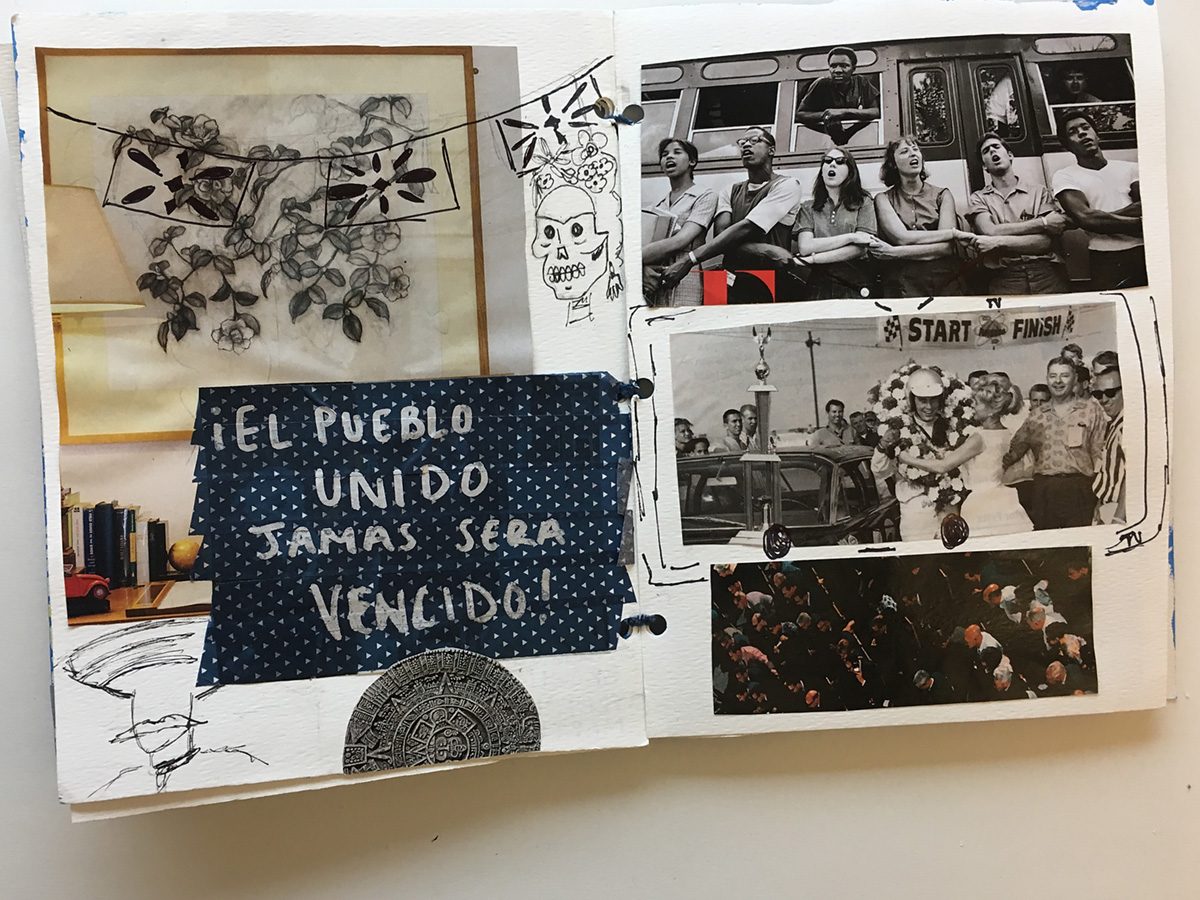
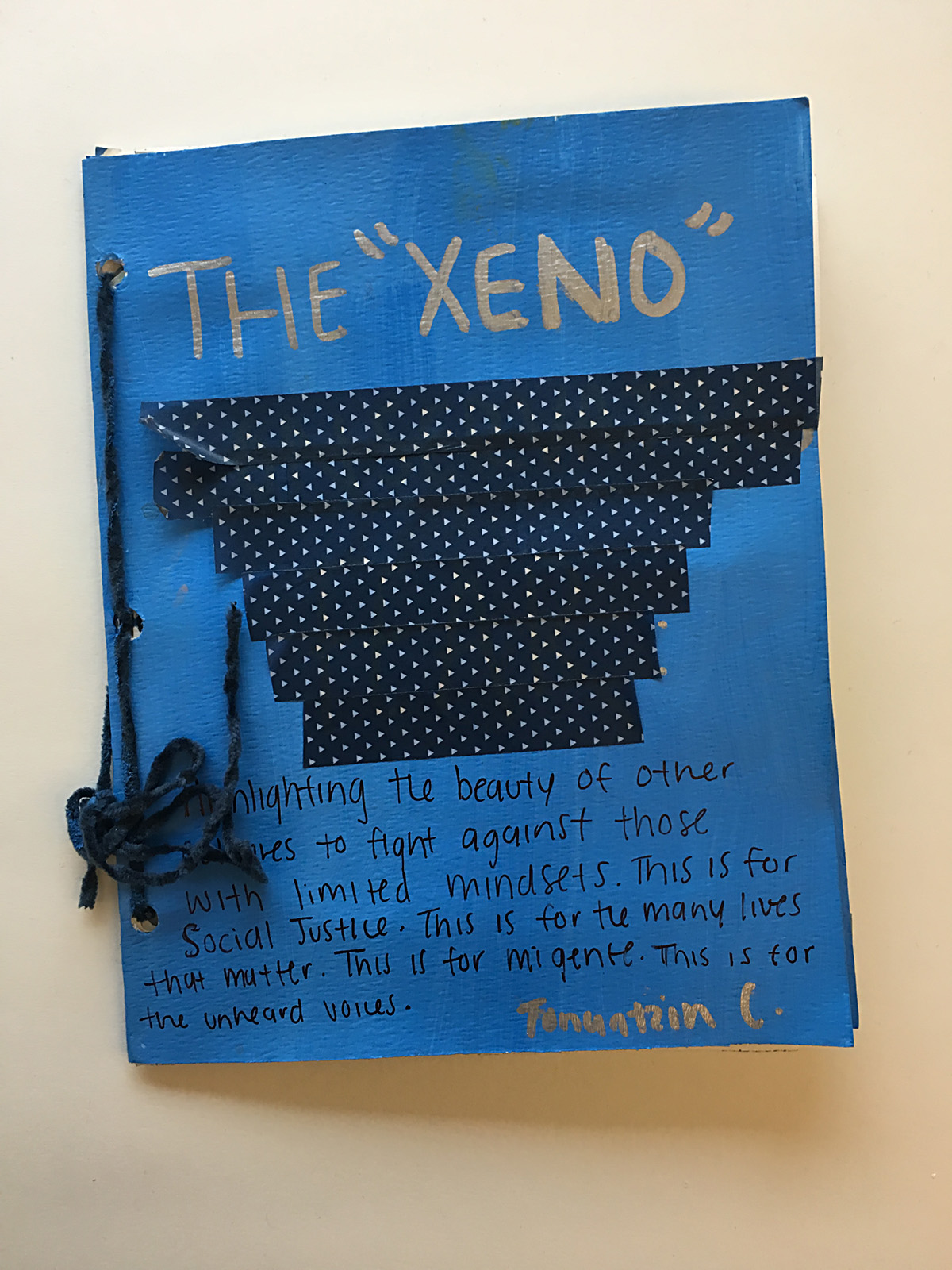
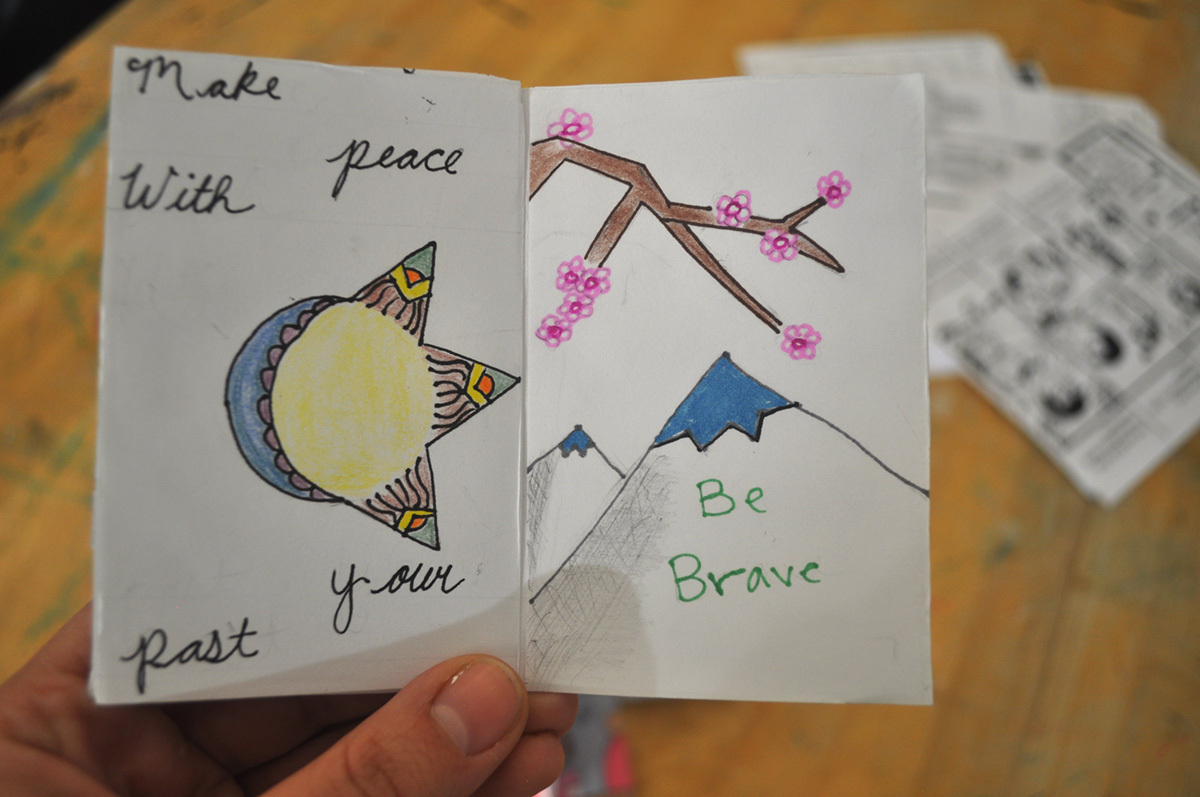
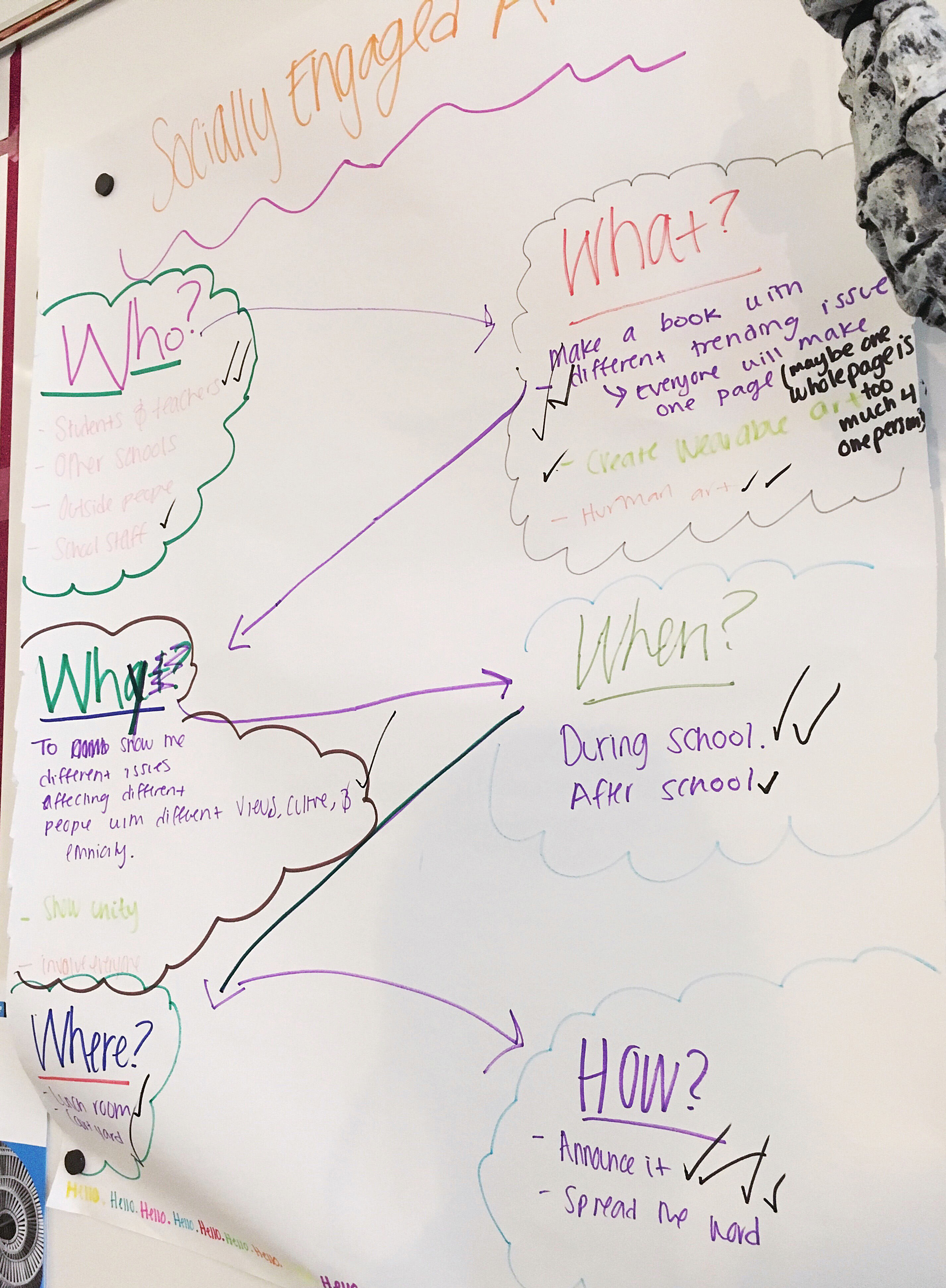
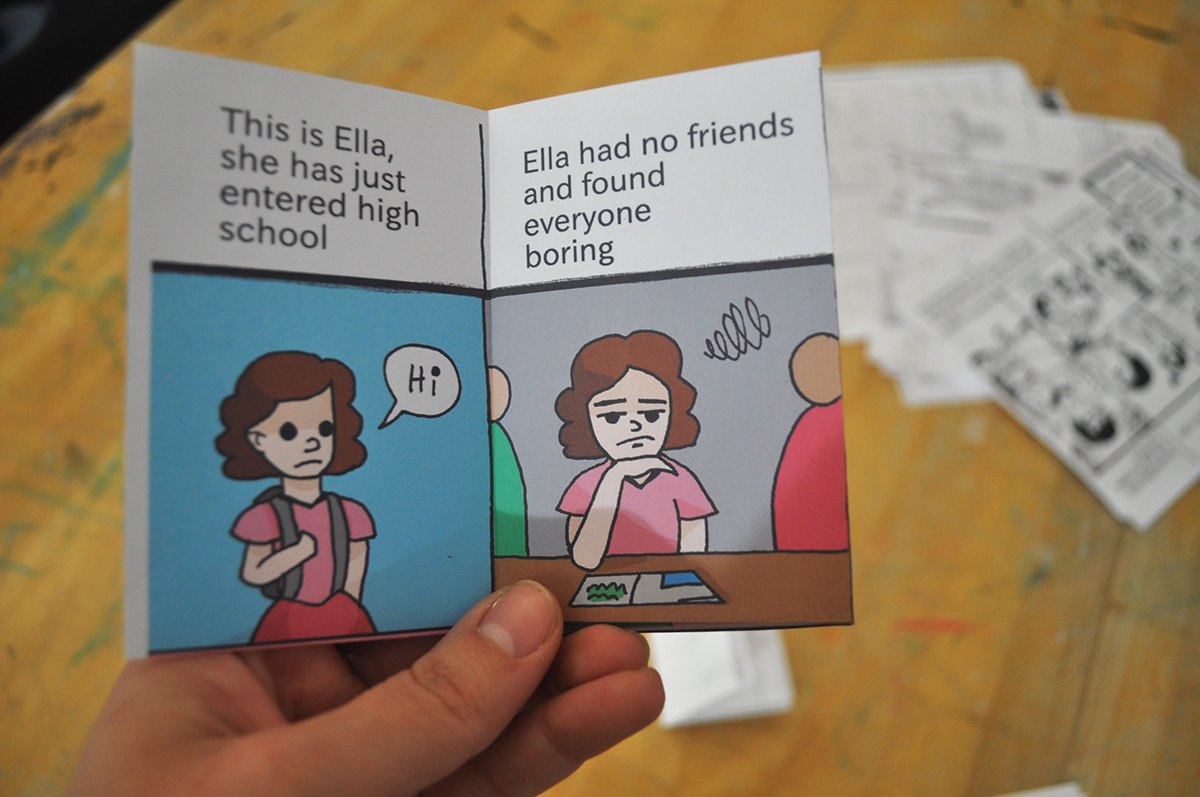
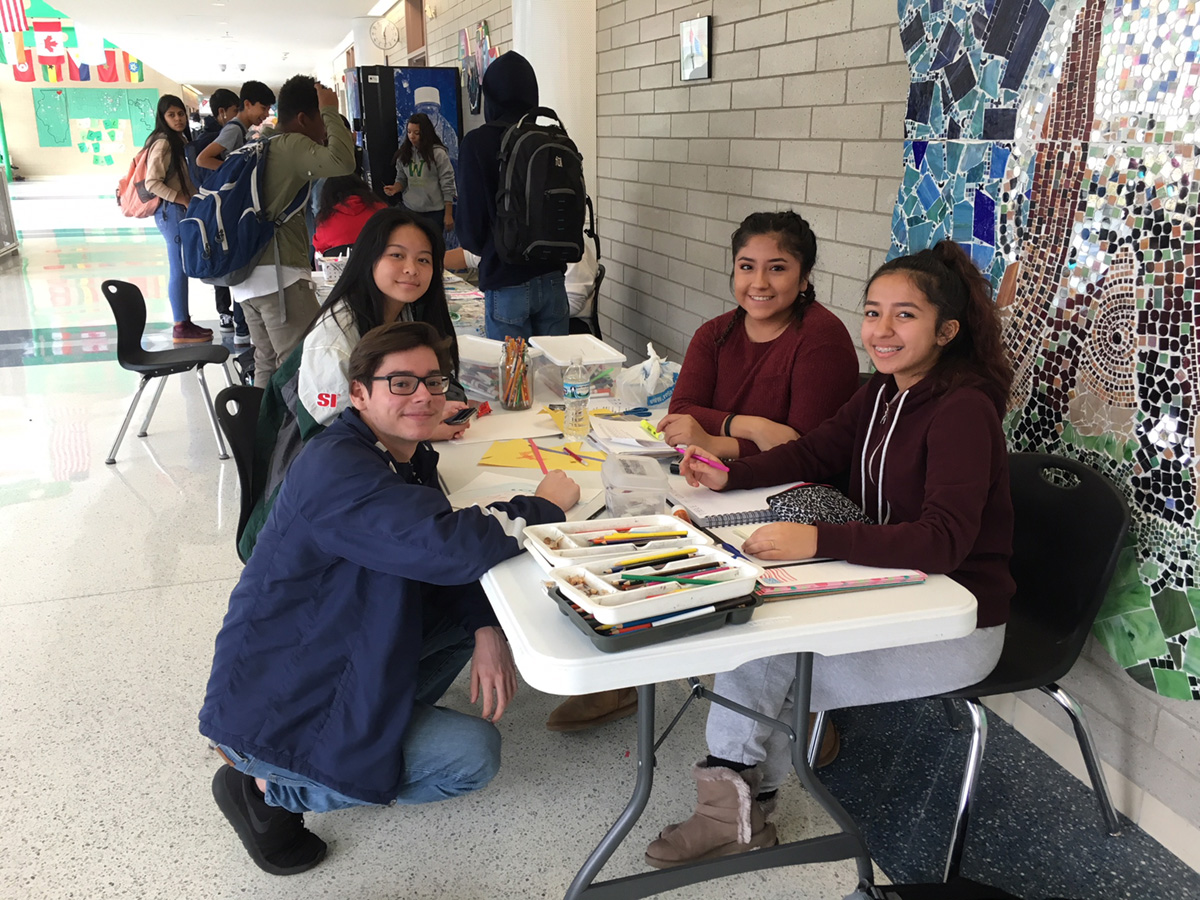
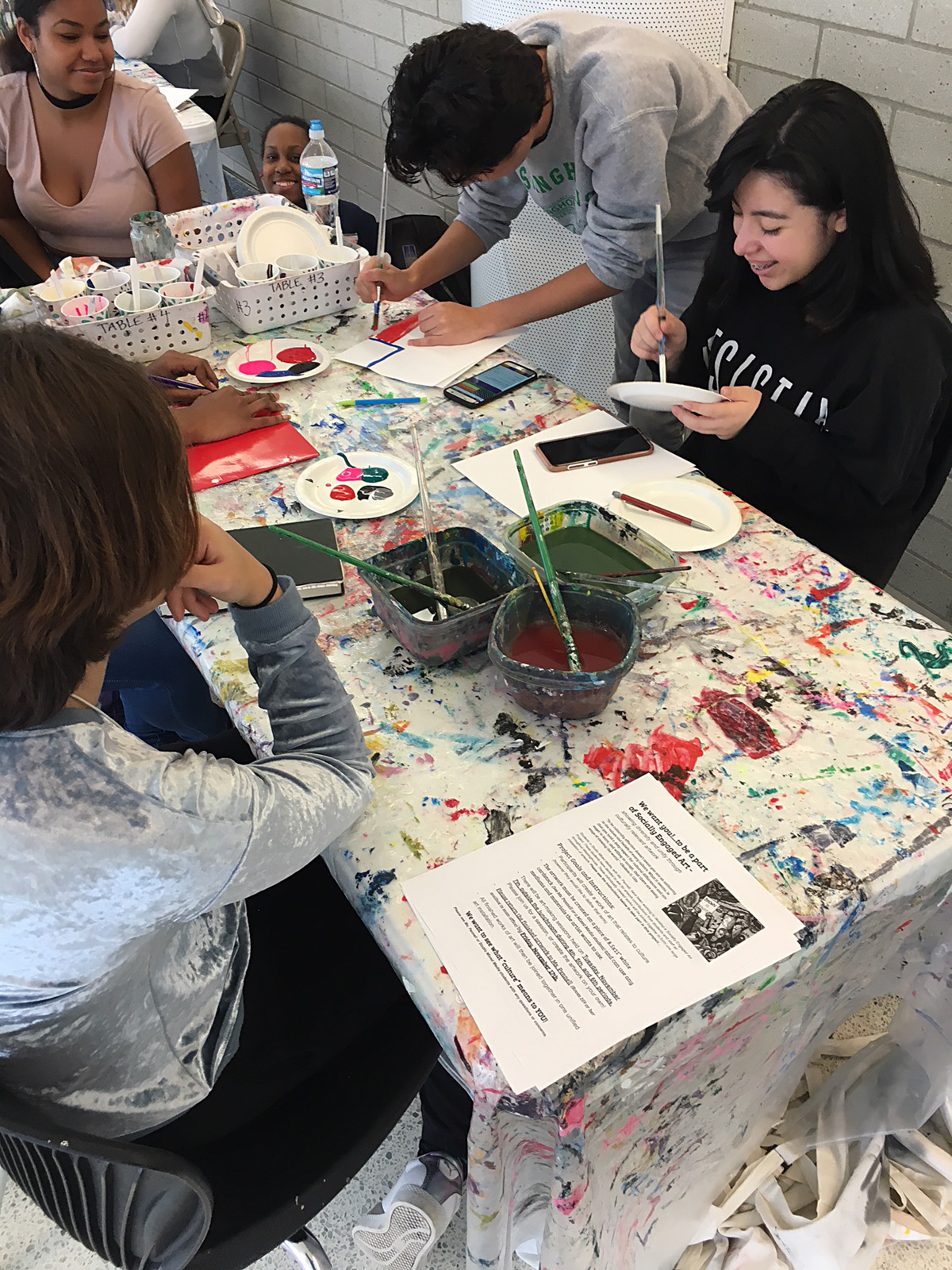
Materials
Collage materials
- Newspaper
- Magazines
- Construction paper
- Scissors
- Glue
- Xacto tools
Mixed media bookmaking materials
- Various paper types (for bookmaking)
- Bookbinding supplies (awl, binding thread, needles)
- Drawing materials (pencils, pens, markers, etc.)
- Painting materials (acrylic, watercolor, brushes)
Socially-engaged project materials
- Copy paper and drawing materials for zines
- Access to a copy machine
- Cardstock (for art-making sessions)
- Various art making supplies (for art-making sessions)
MCA Connections
Students went on an artist-guided tour of the exhibit Takashi Murakami: The Octopus Eats Its Own Leg and also explored the other galleries of the museum. Students who were unable to attend the field trip were asked to use the MCA website as a resource, viewing the site for the Murakami exhibition and writing about his work. Murakami’s work featuring his character Mr. Dob (including 727) was particularly influential in our project. We discussed the artist’s exploration of different media while using a recurring theme. His creation of artworks that depict one subject in many settings, media, and styles was illustrative of how artists grow and change throughout their practice, just as in their lives.

References + Resources
Magazine/Newspaper Collage Inspiration
- Get Creative With Collage Art: Trends and Inspiration
- Top 10 Collage Artists: Hannah Höch to Man Ray
Cut Paper Collage Inspiration
- Henri Matisse — The Cut-Outs
- Footage of Henri Matisse making a paper cut-out
- Yuko Yamamoto
- Marc Paper Scissor
Paper Cutting Inspiration
Zines
Bookmaking
Postmodern Principles
Lisa Pennell
George Westinghouse College Prep
About Lisa Pennell
Lisa Pennell is an art educator at George Westinghouse College Prep in Chicago Public Schools. She has helped to build up the visuals arts department there, offering new courses such as Studio Mixed Media and an AP Studio Art course, the second at GWCP. Before teaching at Westinghouse, Lisa attended the School of the Art Institute of Chicago to obtain her Bachelor of Fine Arts and Art Education. At SAIC she explored a variety of artistic mediums and she continues to explore further in her current artistic practice. One of her main goals is to help her students be open to exploring the art world and trying to find their voices through creating. She hopes to cultivate a lifelong love of art making and to give students the training and skills to pursue creative opportunities on their own.
Lisa Reflects on the Project
We began the school year with a focus on freedom, play, and exploration. This allowed students to develop skills and the motivation to create. We also cultivated a calm and supportive studio environment in our classroom. Students organically began helping one another with ideas, feedback, techniques, and mediums. When reflecting on their progress and process, students expressed genuine responses to the media and techniques we tried out, sharing honestly what they did or did not like working with in each process.
The students found successes and challenges when creating their individual handmade mixed media books. We had a fun time exploring media with no plan, but incorporating those new skills into a planned project with a solid concept proved to be much tougher. Students persevered with support from their peers and from me, and they quickly were back in the joy of the creative process. While students could identify that joyful feeling, finding a way to share that with others was also a challenge. Sharing their work through small zines and sharing the creative process through pop-up art stations were exciting solutions they developed. Coming up with the ideas and executing them was a lot of work, but the students proved to be up to the task!
